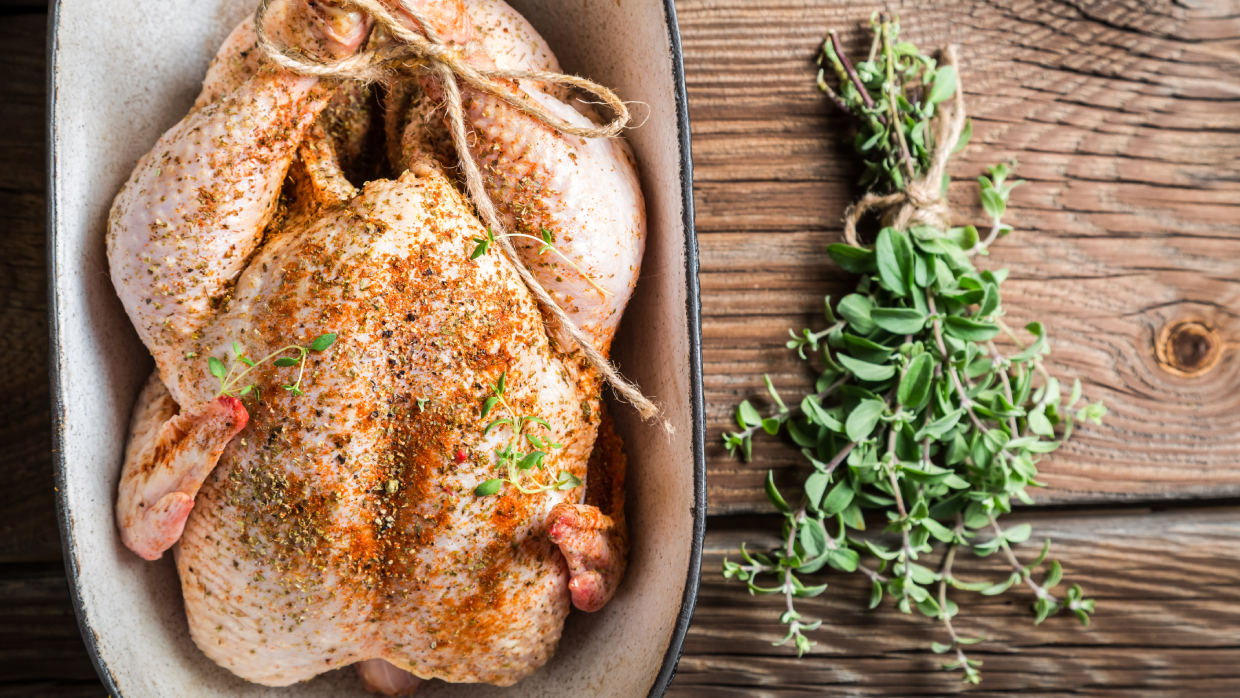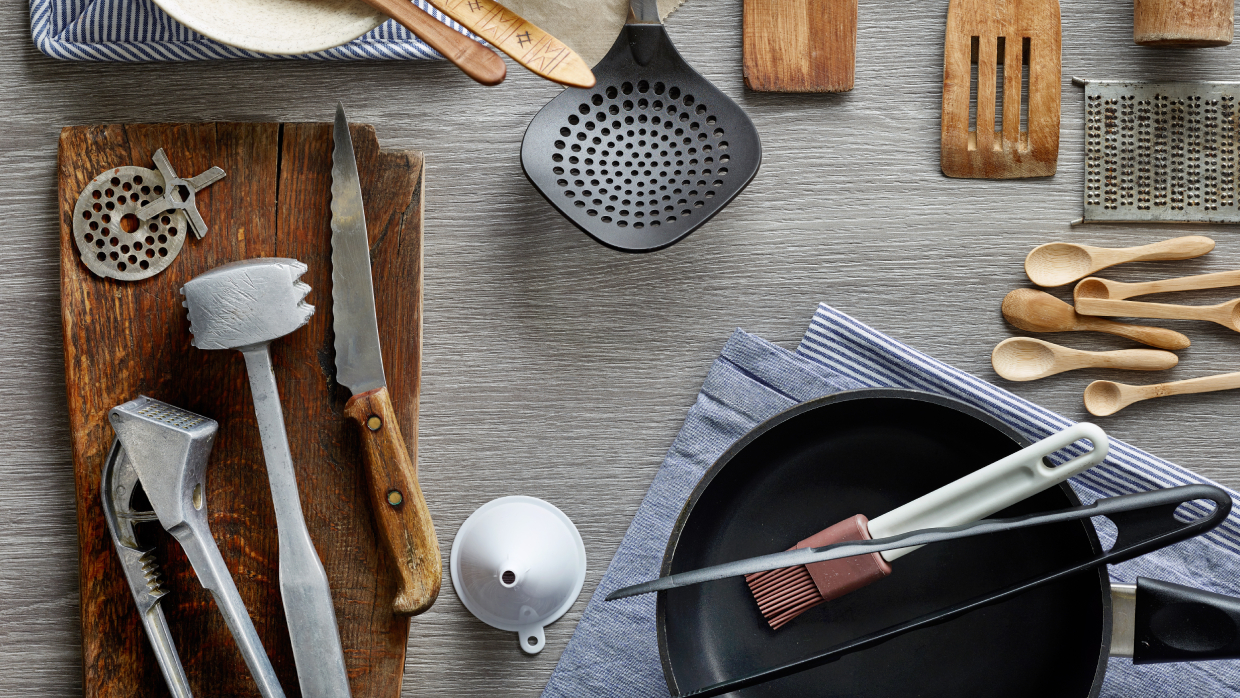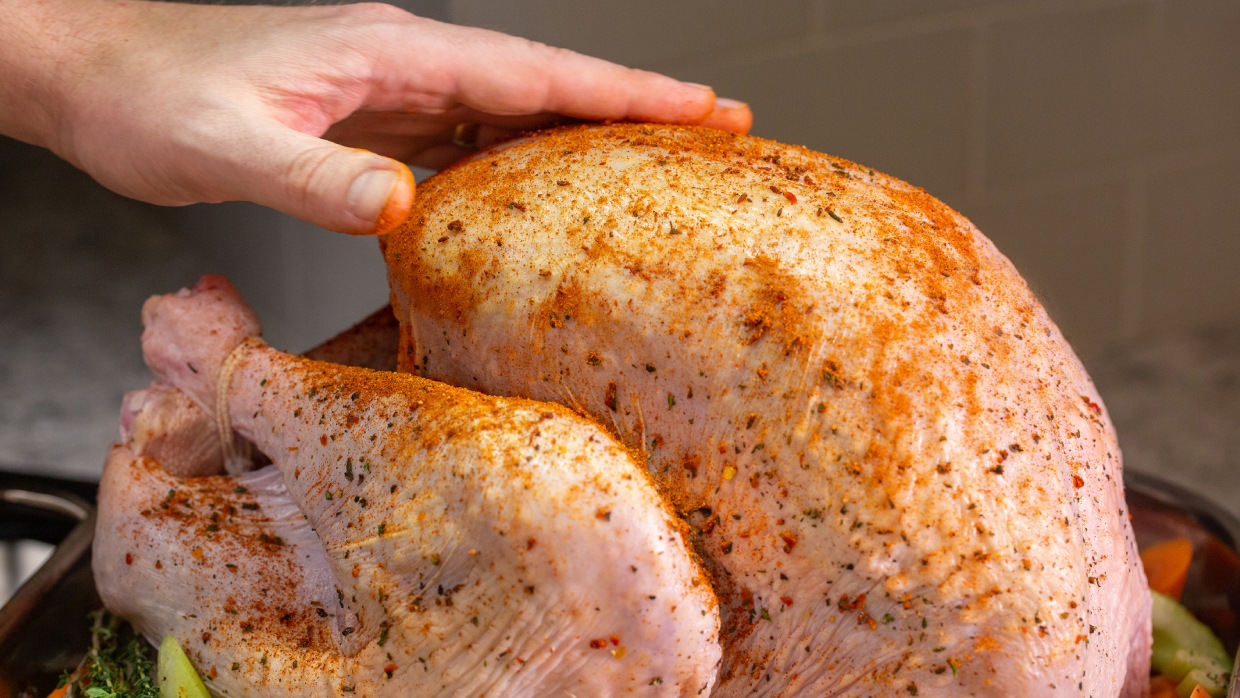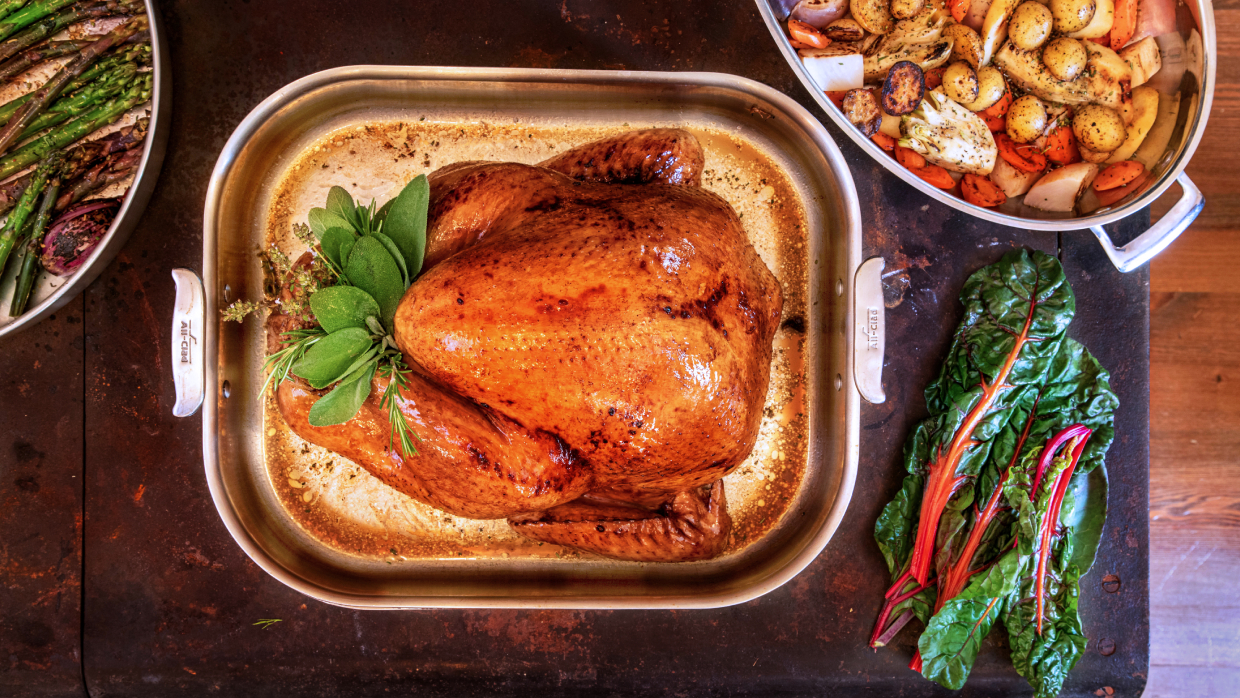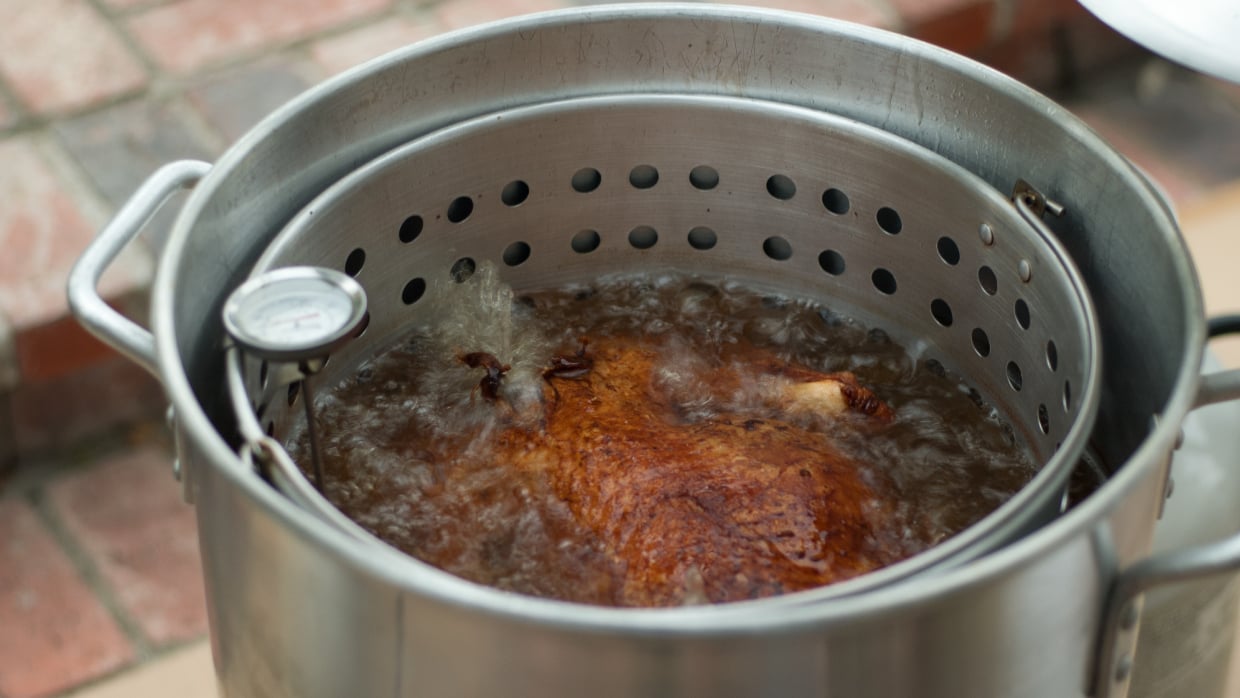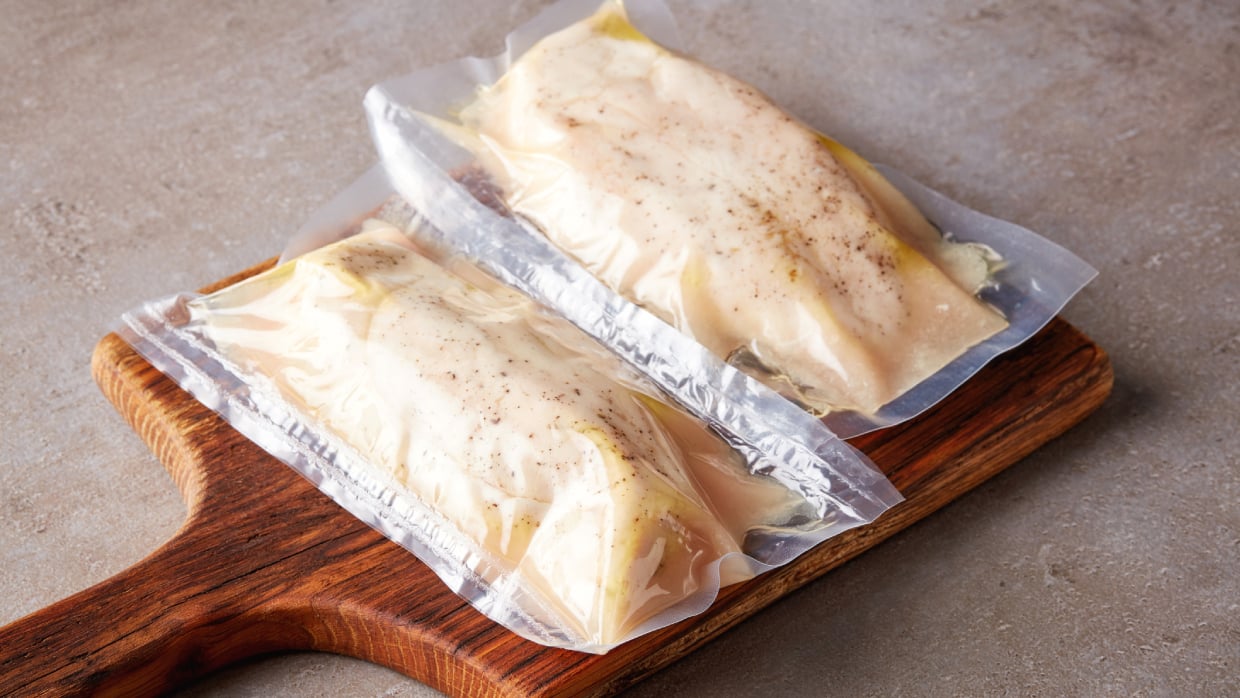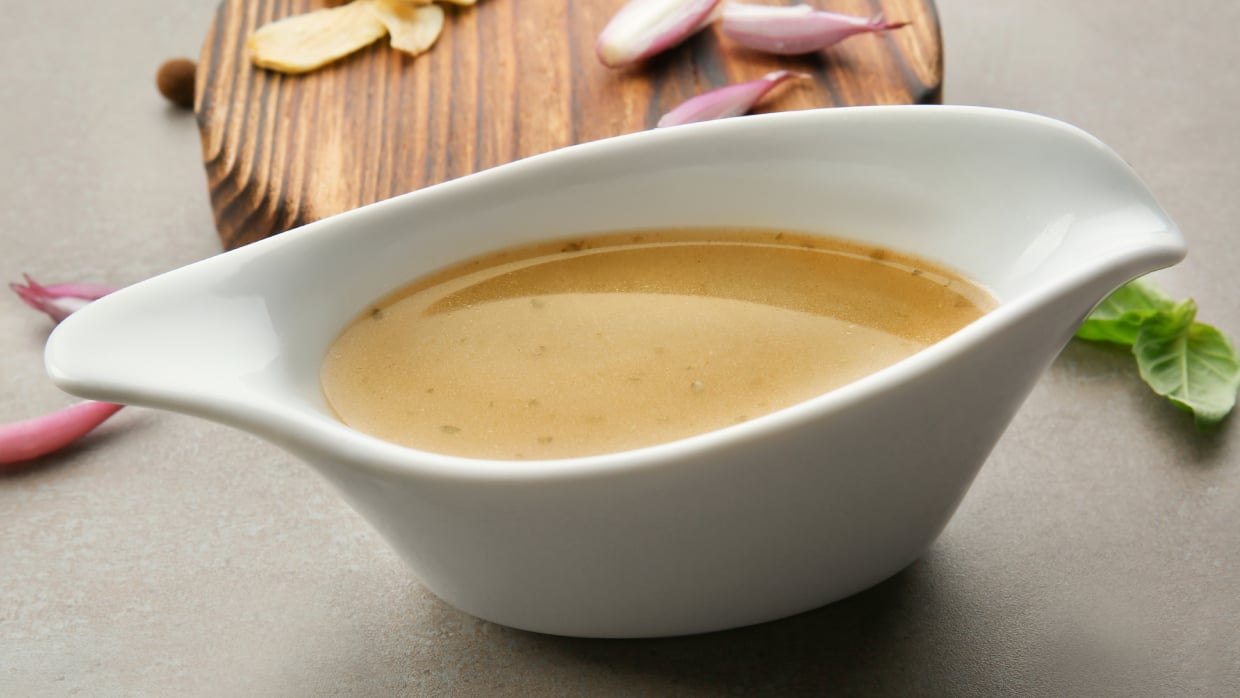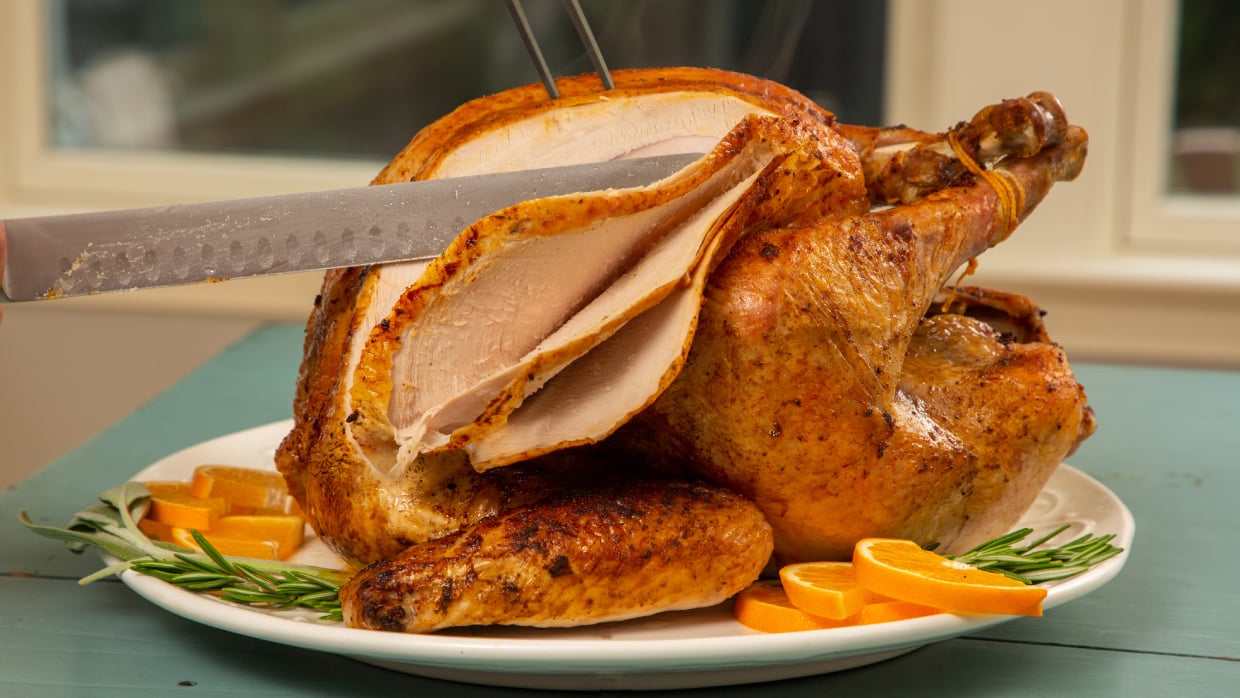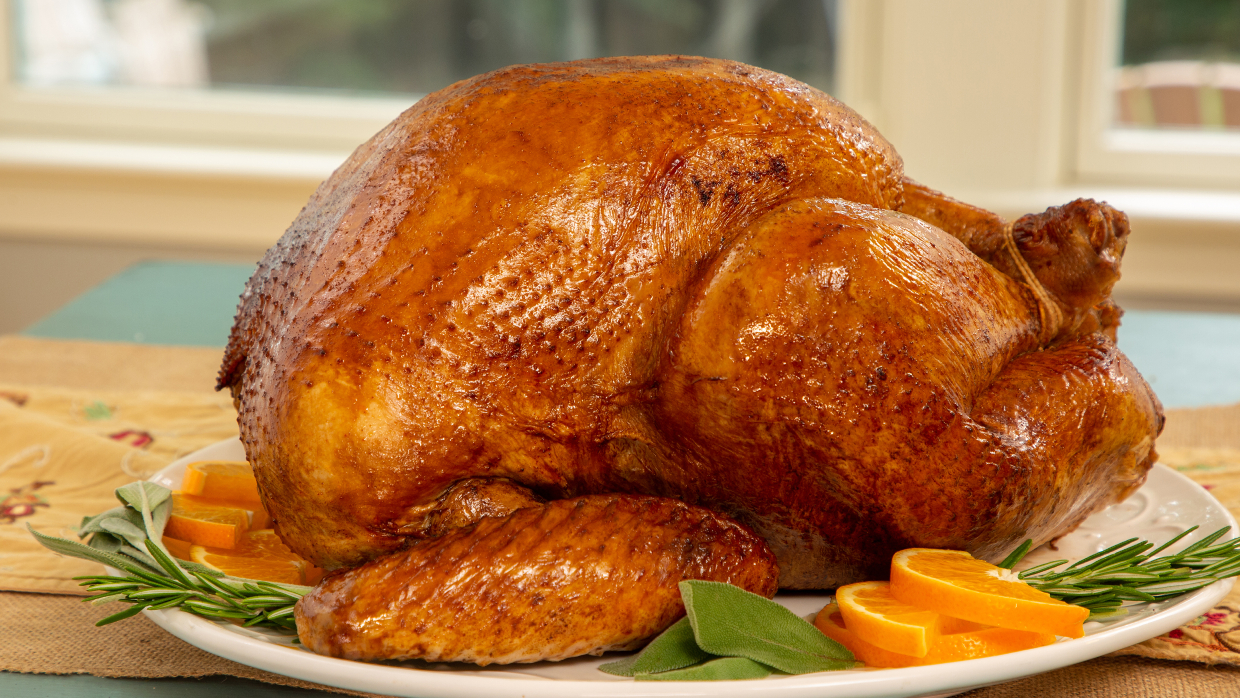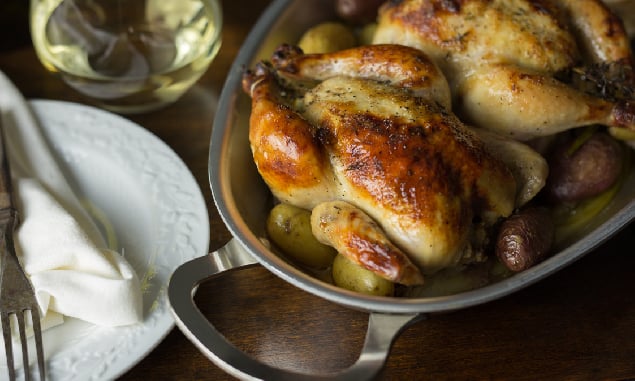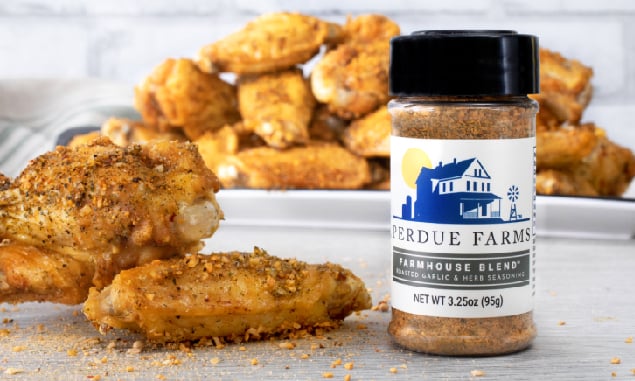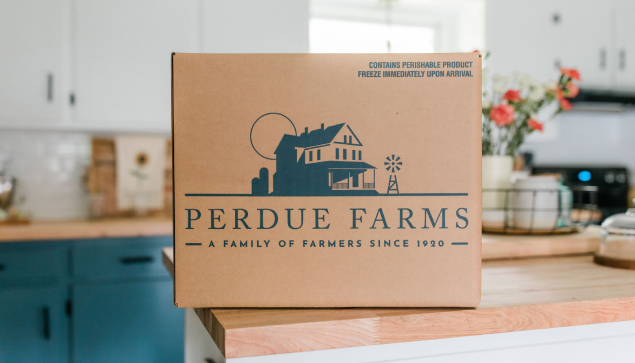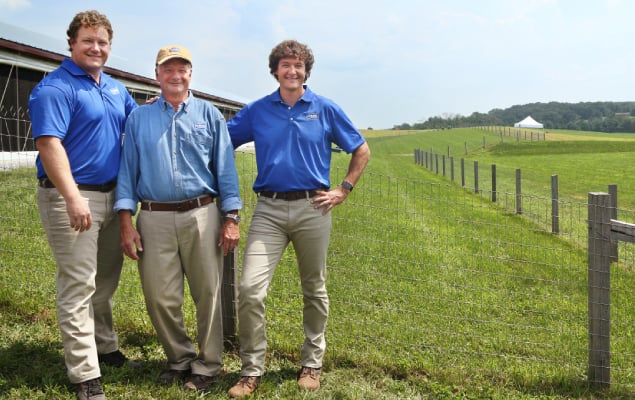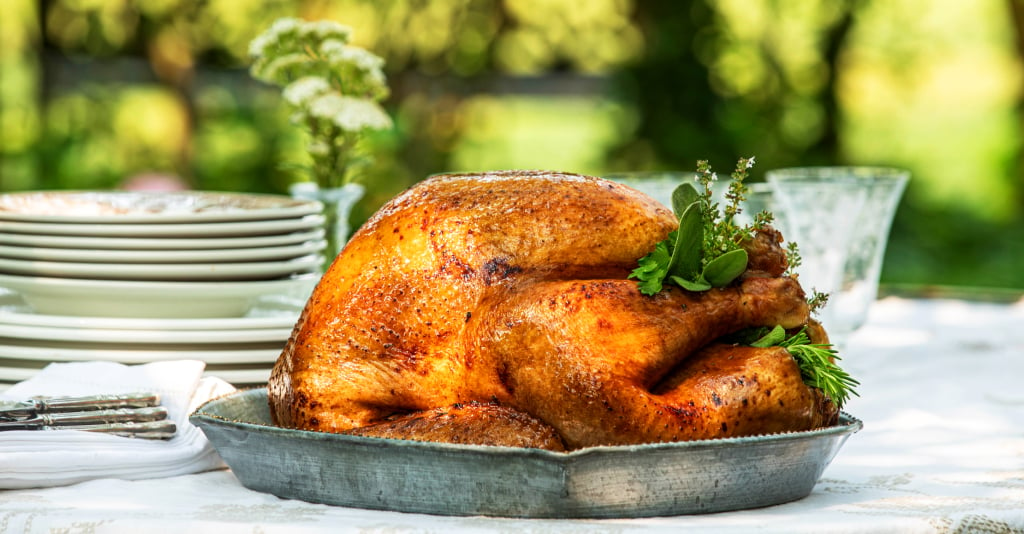
HOW TO COOK A JUICY TURKEY
The secret to a juicy, flavorful turkey starts here! Perdue Farms’ executive chef Shawn Reese, CEC, CRC, shares cooking tips and tricks that will help you prepare, cook, carve and serve up delicious turkey for the holidays or any special occasion. Picking the right turkey size, defrosting, brining, seasoning, roasting, smoking, cooking time and temperature, how to maintain moisture, carving techniques and turkey leftover ideas: Find answers to your top turkey cooking questions and more!
Note: Follow these directions to cook whole chicken, Cornish hens, turkey breasts and other poultry products.
How much turkey do you need to feed family and friends? Plan on about 1/2 pound of cooked turkey per guest (Thanksgiving dinner servings only) or 1 pound of turkey per guest (Thanksgiving dinner servings plus leftovers). This is where it gets a bit tricky: The size of a raw uncooked turkey does not reflect the amount of meat it provides when cooked. A whole turkey consists of 40% edible meat and 60% bone. Cooking a whole bird reduces the amount of edible meat by 25%. So a little math is required to figure out what size bird will feed what size crowd. Luckily, we’ve done the heavy lifting for you:
The cooking process begins with assembling the necessary tools, which may include (depending on your cooking method of choice):
- Stainless steel roasting pan
- Large sheet tray
- Baking pans
- Extra-long heavy-duty stainless steel utility tongs
- Sauce and stock pots
- Large sieve
- Digital meat thermometer
- Meat injector
- Sharp carving knife and fork
- Butcher knife set
- Serving platter(s)
- Aluminum foil
- Basting brush
- Cutting boards
- Vegetables (garlic, onion, carrots, celery)
- Seasonings, spices and herbs
- Butter and vegetable oil
- Cornstarch
- Large zipper storage bags
- Large food storage container
- Paper towels
- Disinfectant wipes for counter surface cleanup
Best Dry Rub for Turkey
To season skin before placing turkey in the oven, consider a dry rub of salt, pepper, woody herbs and granulated garlic. Avoid green herbs like fresh basil and cilantro, as they will not withstand the cooking process, and avoid the urge to overspice as too much seasoning may overpower the flavor of the meat. The cavity may be stuffed with apple or citrus slices to perfume meat. For added moisture, rub butter underneath the skin.
Thawing: To defrost, place turkey, still in its bag, in the refrigerator. Allow 24 hours for every 7 pounds of turkey. Cook promptly after defrosting. Never refreeze a defrosted turkey.
Roasting: Remove the neck from the breast cavity and the giblets from the neck cavity. Rinse the inside and the outside of the turkey with water, and place the turkey in a roasting pan. Add 1 cup of water to the roasting pan. Loosely cover with aluminum foil. For food safety reasons, we do not recommend stuffing your turkey.
Optional: Lightly rub the outside of the turkey with a mixture of ½ cup melted butter, 1/8 teaspoon salt and 1/16 teaspoon pepper.
Roast turkey as follows:
- 8-14 lbs., 4 1/4-4 3/4 hours, 325 F
- 14-20 lbs., 5 1/4-5 3/4 hours, 325 F
Time will vary with type of oven. One hour before completion, remove the foil to brown the turkey.
When meat thermometer, inserted two-thirds of the way into the thickest part of the breast, measures 175 F, turkey is done. Remove from oven, cover with foil and let stand 15 minutes. The turkey will continue to cook and the temperature will rise another 5 F. You are now ready to carve, serve and enjoy your turkey.
Can you promise us one thing? You won’t ever drop a frozen turkey into a deep fryer. Like, never! Why? The moisture from the frozen bird causes the oil to rise and potentially overflow, which equals a big fire hazard.
Here’s the safest way to fry a turkey:
- Choose a spot to fry your turkey that is outside and away from your house. Be sure to have a fire extinguisher close at hand. And assemble supplies, including long tongs, vegetable oil, a digital meat thermometer, paper towels, a cutting board, a platter, aluminum foil, etc.
- To determine the amount of oil needed, first place turkey in empty fryer. Fill with water to cover bird, then remove bird. The amount of water in the fryer equals the amount of oil you will need to fry. Remember: You can always add more oil; using too much oil may result in an overflow.
- Season turkey as you would if roasting (see above). Do not use dry rub, as it will burn off.
- Heat oil in fryer to 290 to 350 F. Place turkey in the fryer and let fry for approximately 45 to 55 minutes.
- To check for doneness, remove turkey from oil, place on platter or cutting board, and, using a digital meat thermometer, check temperature in the center of the breast and at the point where the thigh bone meets the drum bone. If meat registers lower than 175 F, resubmerge in oil and continue to cook until done.
- Serve immediately.
Cooking a turkey in a water bath results in brighter herb flavors, as seasonings don’t flash off as they would in a hot oven.
We recommend that you break down the whole turkey into parts. Vacuum sealing a whole bird, as it has a large empty cavity, will result in uneven heat distribution and potential cold spots.
Here’s the best way to sous vide a turkey:
- Set water bath to 147 to 155 F.
- Break whole bird down into quarters by butterflying and then cutting in half. Then remove legs and wings.
- In a large skillet set over medium-high heat, sear pieces, skin side down, until browned. Let cool.
- Place turkey pieces, a sprig of thyme, garlic and butter in a vacuum storage bag. Seal.
- Place bag in water bath and let cook for 3 to 4 hours. To check for doneness, remove turkey from bath, open bag and test turkey with a digital meat thermometer. If turkey requires more cooking time, reseal bag and return turkey to water bath.
- When done, remove turkey from bag, pat dry with a paper towel and place in a 425 F oven for 10 to 15 minutes to brown and crisp up the skin.
- Serve immediately.
The finishing touch to any traditional holiday feast, homemade gravy requires minimal effort. To start, capture the roasting juices from the pan and pour into a sauce pot. Puree the mirepoix, or strain liquids from the vegetables, and add to the roasting juices. Simmer over low heat, then thicken the mixture with a cornstarch slurry (one part cornstarch to two parts water). Add a pinch of thyme or sage to taste.
For a more full-bodied gravy, add the turkey backbone (which you removed when spatchcocking the whole bird), wing tips and neck to roasting juices in a stock pot with mirepoix. Let slowly simmer. When ready, strain the mixture and thicken with slurry. Add a pinch of woody herbs to taste.
Carving a whole bird, though an American tradition, is not the best way to carve turkey, as you are cutting against the grain of the meat and leaving a large portion of meat on the bone.
Our suggestion:
Remove turkey breasts by cutting along the chest plate on either side of the bird. Cut underneath, as well, to release the breast. Slice breasts just as you would a roast. You will find that carving in this style results in a juicier, more tender piece of meat. Leave drumsticks whole and plate with sliced turkey breast. Take bones out of thighs and rough chop the meat. Add to platter and serve.
How to Cook a Stuffed Turkey
Our advice? Just don’t do it. Too many things can go wrong, like overcooking the turkey to bring the stuffing up to a safe 165 F. Or serving stuffing that is undercooked in spots, which puts you and guests at risk for food-borne illnesses.
To add more turkey flavor to stuffing, mix in turkey stock or reduce turkey stock before adding to stuffing mixture. And always bake stuffing in its own pan.
Cooking Turkey in a Bag
Although this cooking method makes cleanup a breeze, it does not improve flavor or texture. And bag cooking will not result in crispy, golden brown skin, which is ideal.
How Often to Baste a Turkey
Believe it or not, basting is not necessary unless skin browns too quickly (see below). Basting may impart a bit more flavor, but will not impact the tenderness or moisture of the meat.
What to Do with Leftover Turkey
Leftovers will last about 5 days, if properly refrigerated. We suggest a classic gobbler sandwich (a hoagie bun packed with turkey, cranberry sauce and stuffing) or bubble and squeak, a classic English dish usually served for breakfast. To make, combine all leftovers with mashed potatoes and stuffing, form into patties and fry on medium-high heat in a sauté pan. Serve immediately.
Why Choose Perdue Farms
When it comes to the food you feed your family, quality matters. And while there are a lot of options out there, Perdue Farms stands apart. In business for over 100 years, we are a fourth-generation, family owned American food and agriculture business that from the beginning has worked with family farmers.
